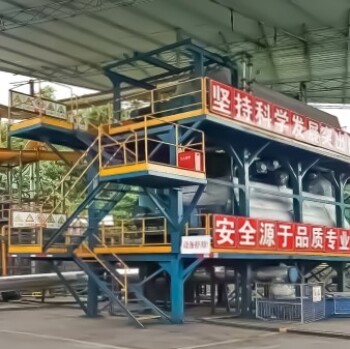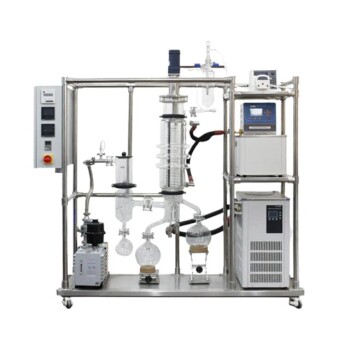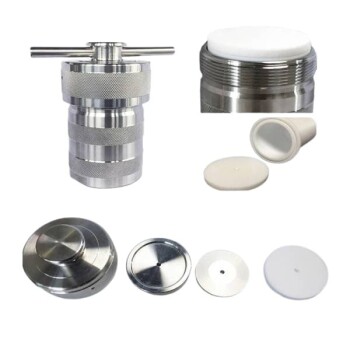Biomass pyrolysis is a thermal process that converts biomass into bio-oil, biochar, and syngas by heating the biomass in the absence of oxygen.
This process is crucial for producing a liquid fuel that is easily stored and transported, which can be used for heat, electricity, and chemical production.
4 Key Steps Explained

1. Drying
The biomass is first dried to remove moisture.
2. Pyrolysis
The dried biomass is heated to temperatures between 300-900°C in the absence of oxygen.
This decomposition process breaks down the biomass into its constituent parts like cellulose, hemicellulose, and lignin.
3. Cooling and Separation
The pyrolysis products are then cooled and separated into bio-oil, biochar, and syngas.
4. Bio-oil Production
Bio-oil is a dark brown liquid primarily composed of oxygenated compounds.
It is produced through the rapid heating and fast quenching of biomass in a process known as fast pyrolysis.
The yield of bio-oil can range from 50 wt% to 75 wt% on a dry biomass basis, depending on the reaction conditions such as heating rate, residence time, biomass particle size, and temperature.
Properties and Challenges of Bio-oil
Bio-oil contains a high content of water and various organic components, making it unstable and unsuitable for direct use as an engine fuel.
Its instability is due to the presence of reactive molecules and large oligomeric species, which can lead to phase separation and increased viscosity over time.
Therefore, bio-oil requires upgrading, such as deoxygenation, to improve its stability and compatibility with refinery fuels.
Economic and Environmental Considerations
Despite the potential of biomass pyrolysis to produce sustainable bio-oil, the commercialization of this technology is limited due to operational complexities and lower profitability.
However, biomass remains a promising source for clean and sustainable products, given its abundance, low cost, and zero harmful emissions.
Continue exploring, consult our experts
Discover the Future of Sustainable Energy with KINTEK SOLUTION!
Our cutting-edge biomass pyrolysis systems are designed to unlock the potential of biomass, converting it into valuable bio-oil, biochar, and syngas—key components for sustainable energy production.
With our advanced drying, pyrolysis, and cooling technologies, we ensure efficiency and reliability.
Experience the power of innovation and join the movement towards cleaner, greener energy solutions with KINTEK SOLUTION—your partner in sustainable technology.
Get in touch today and elevate your bioenergy project!










